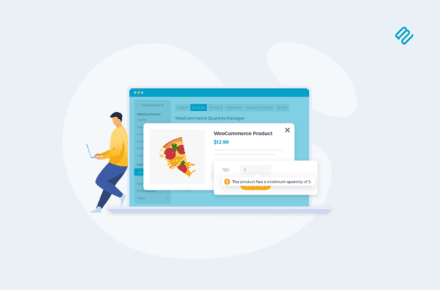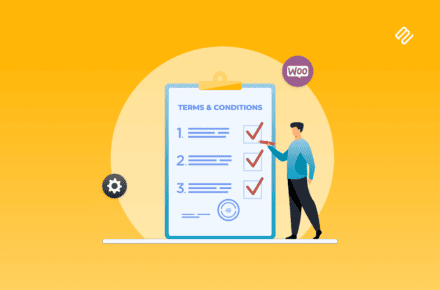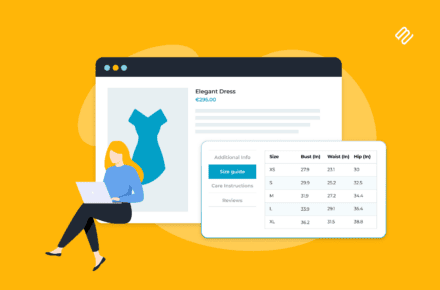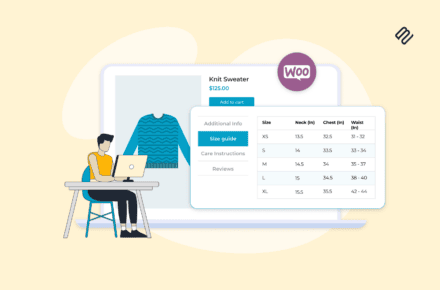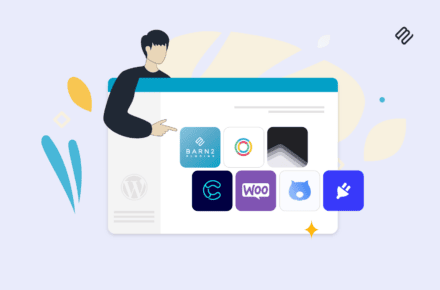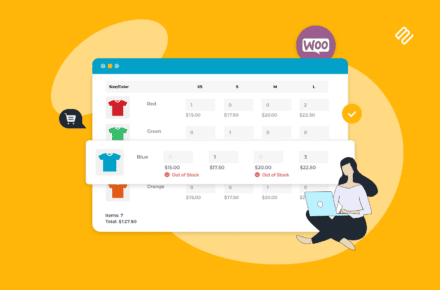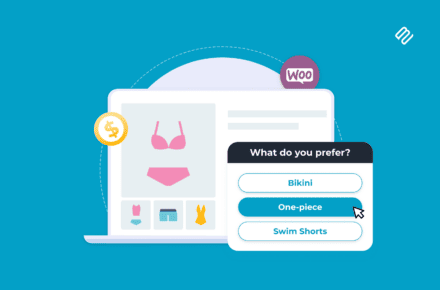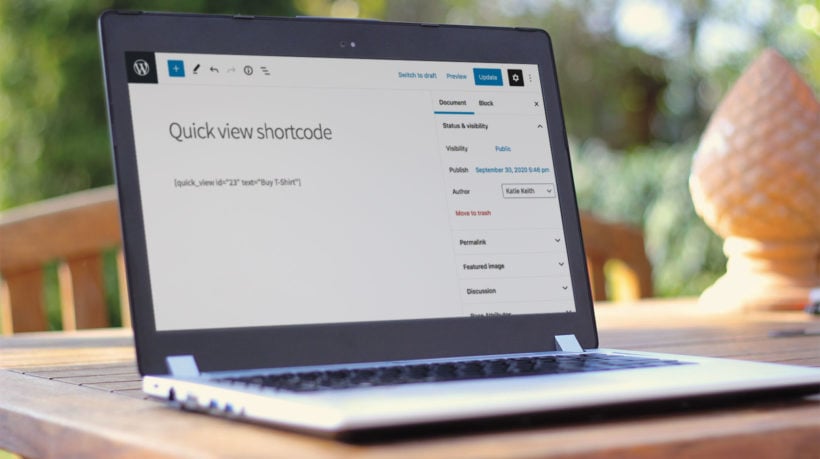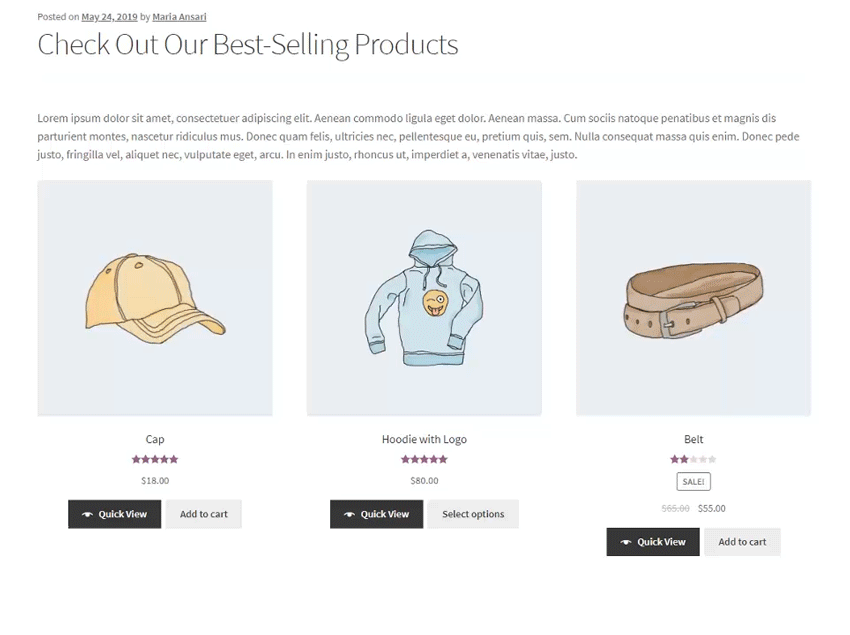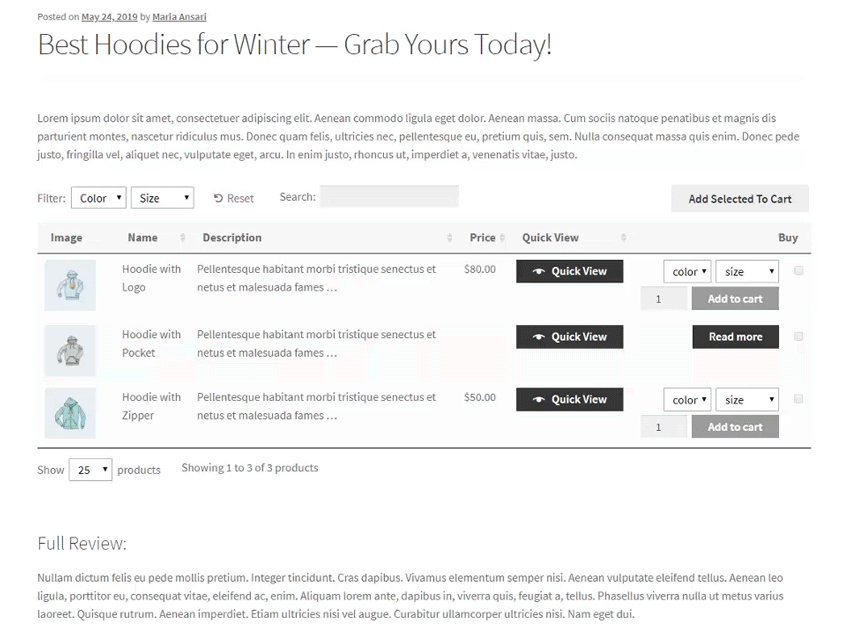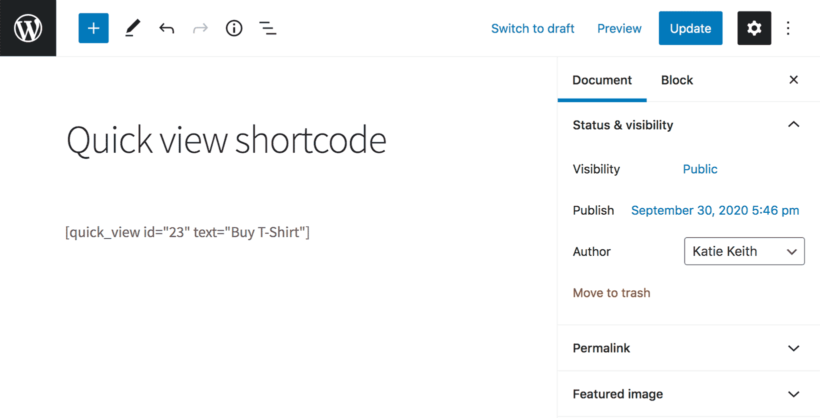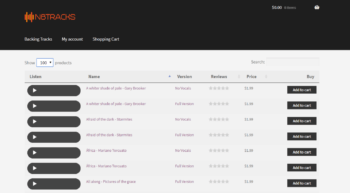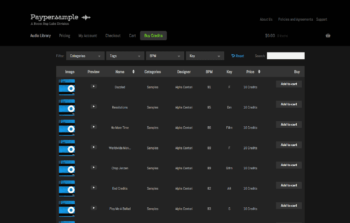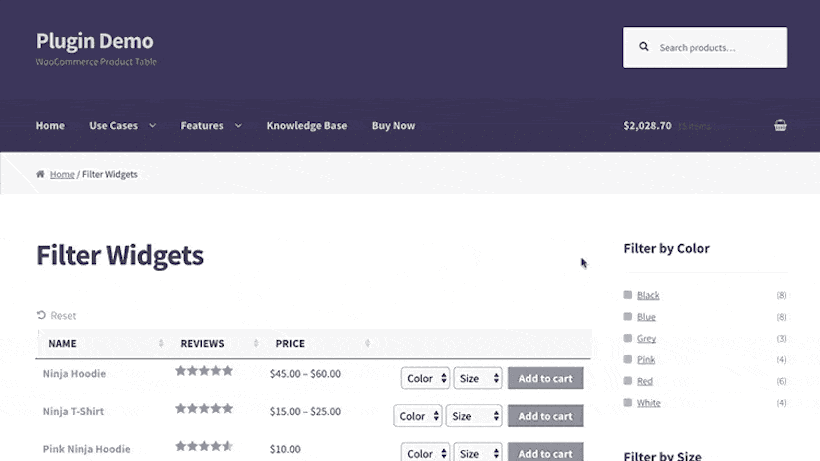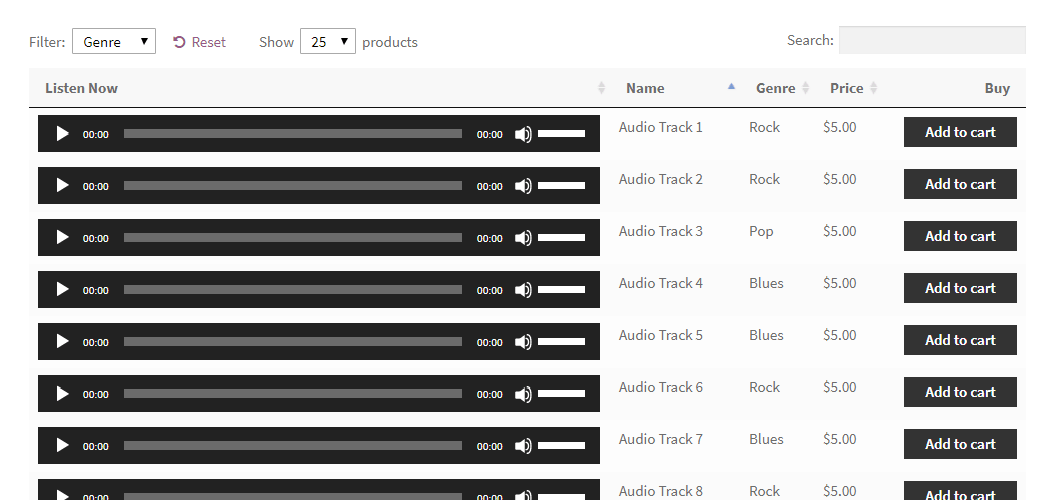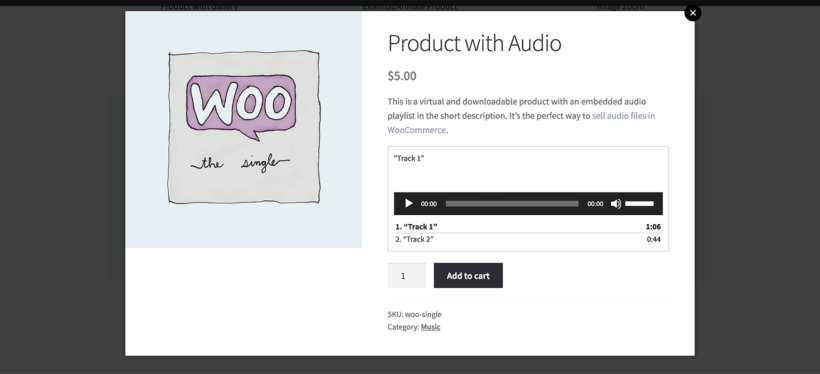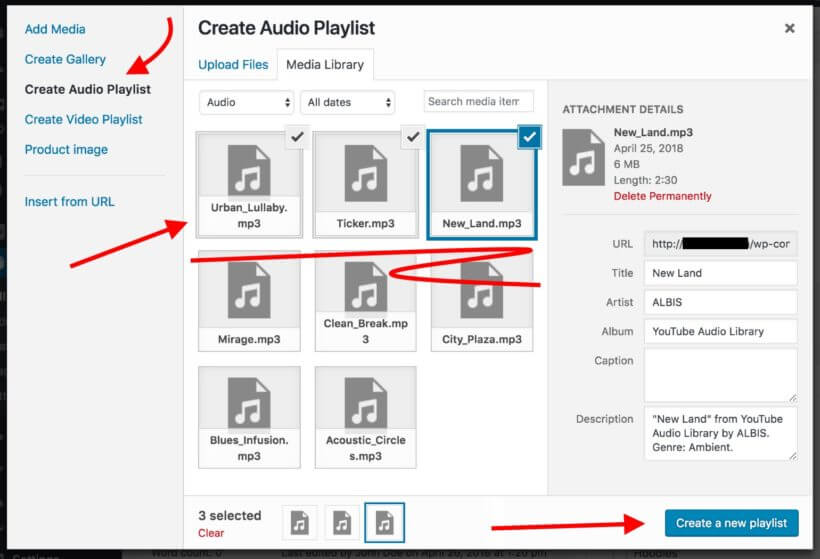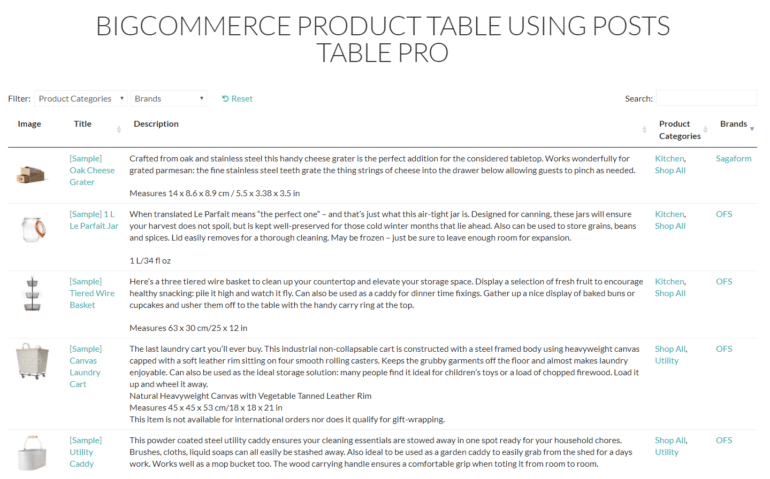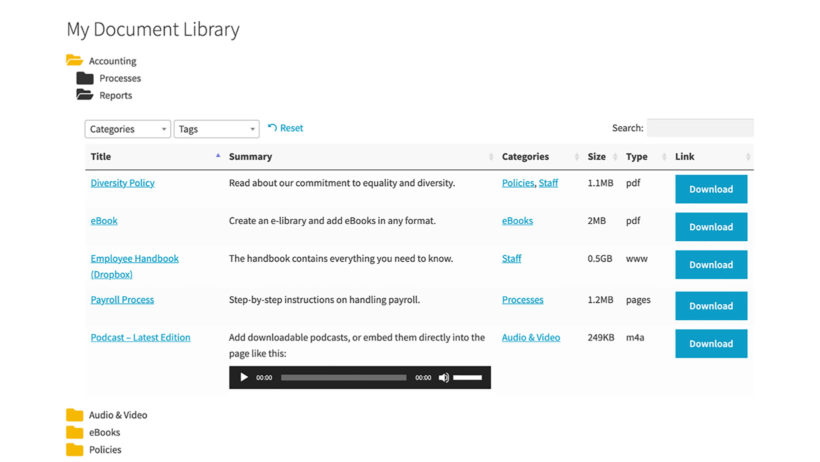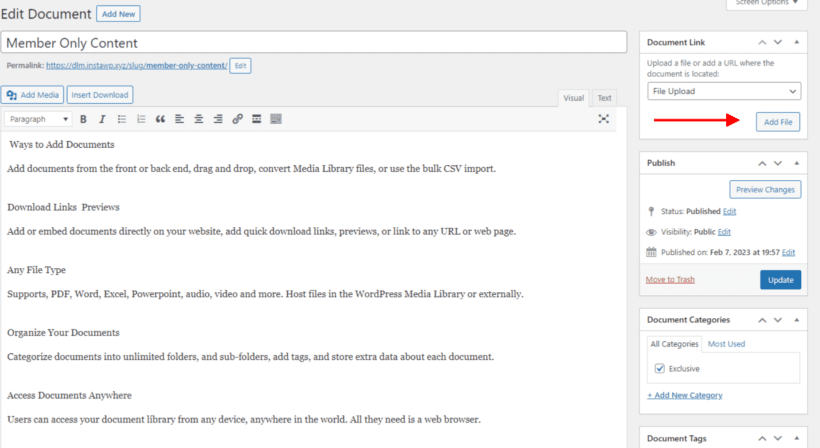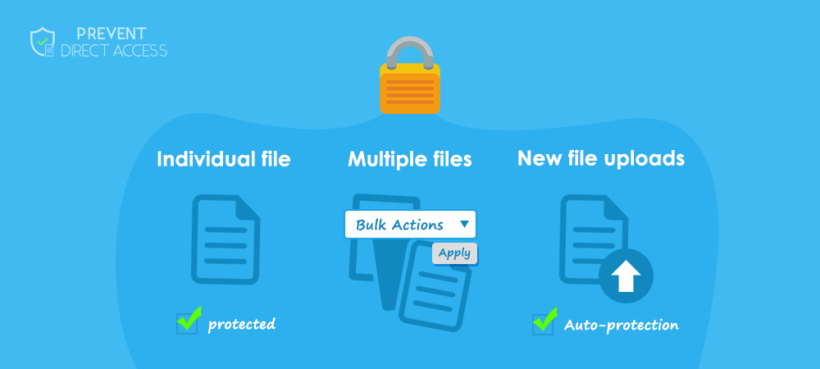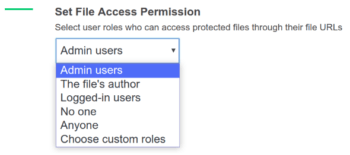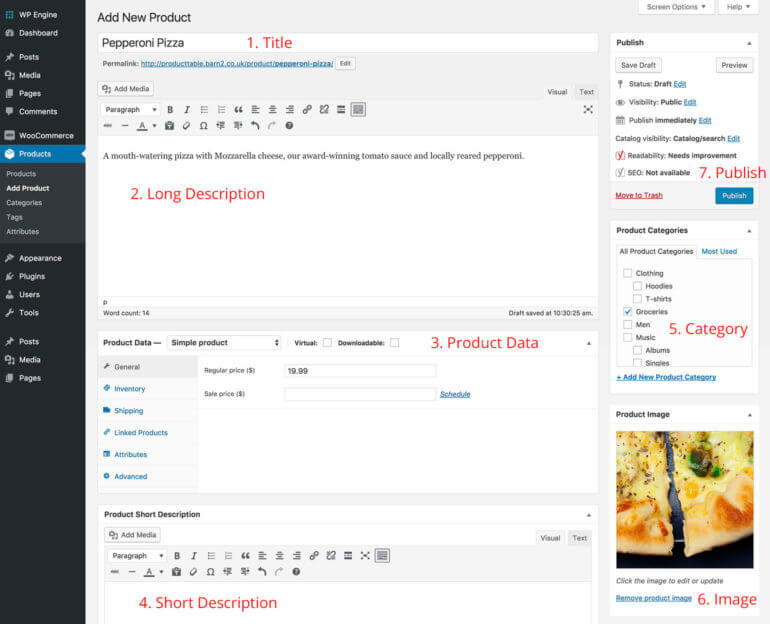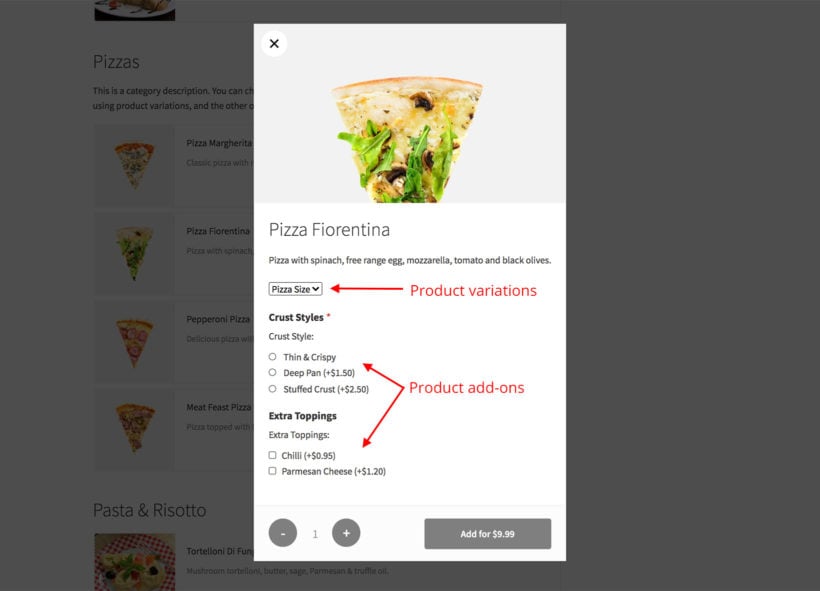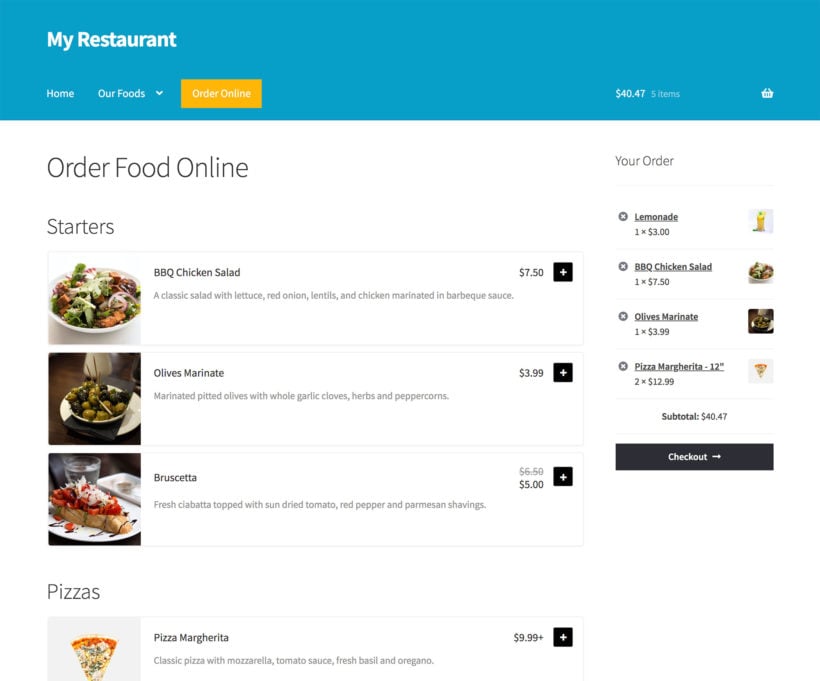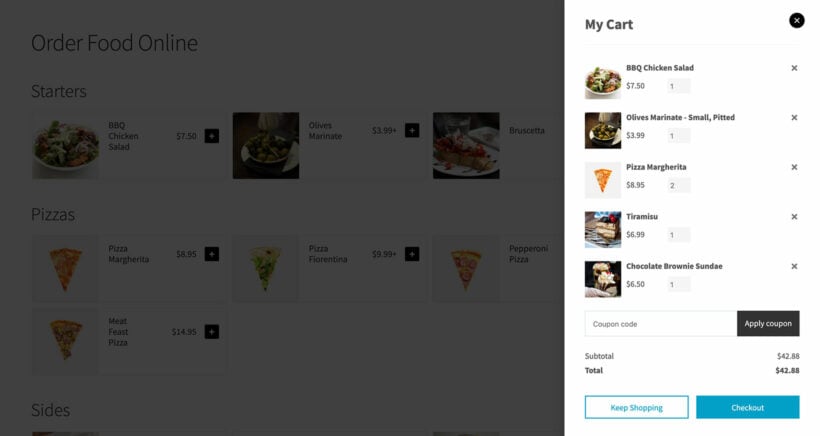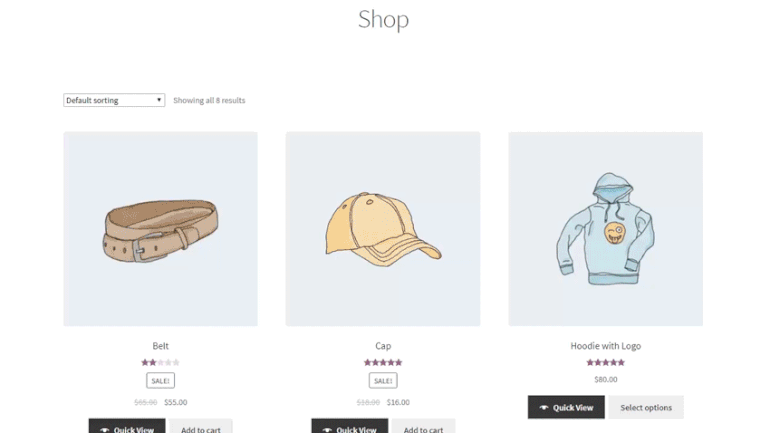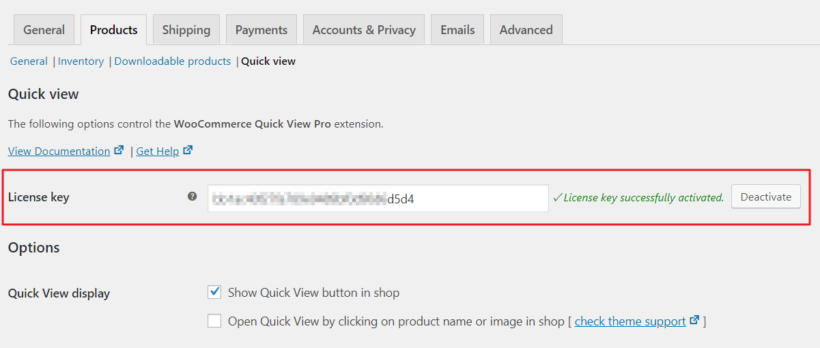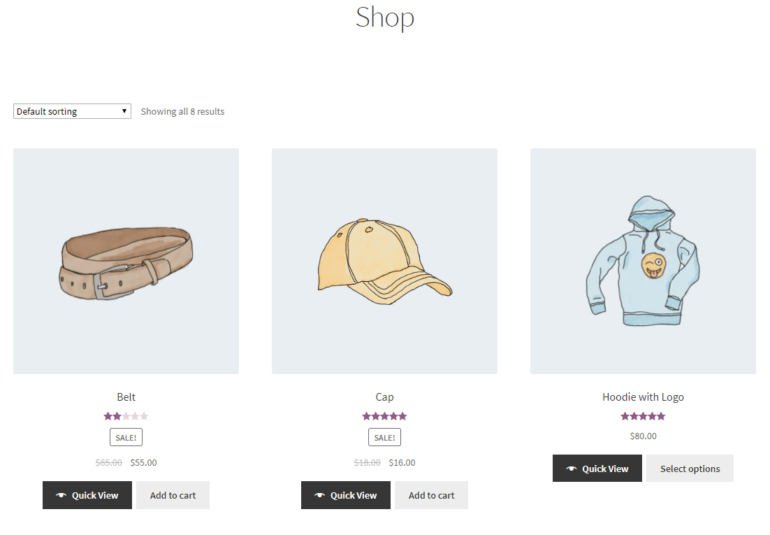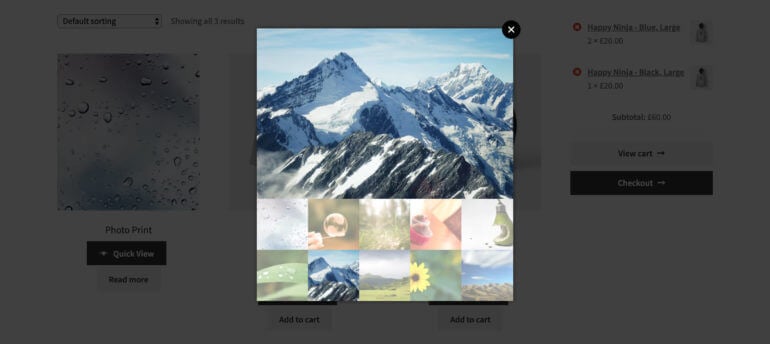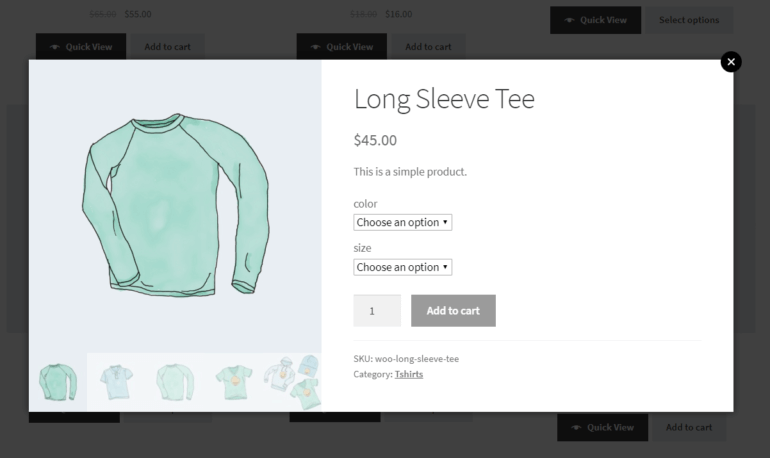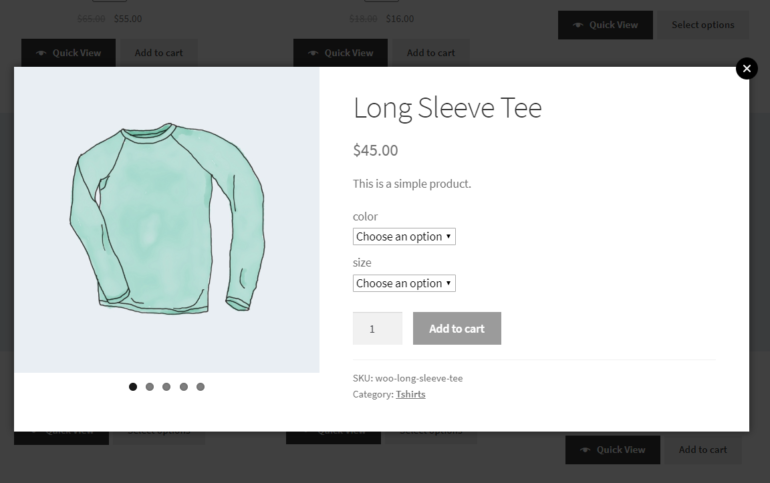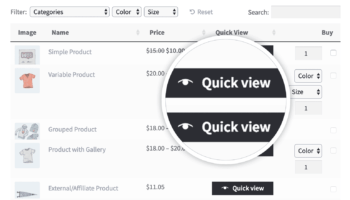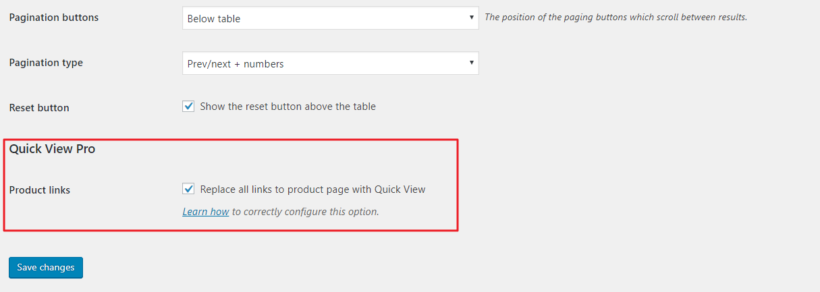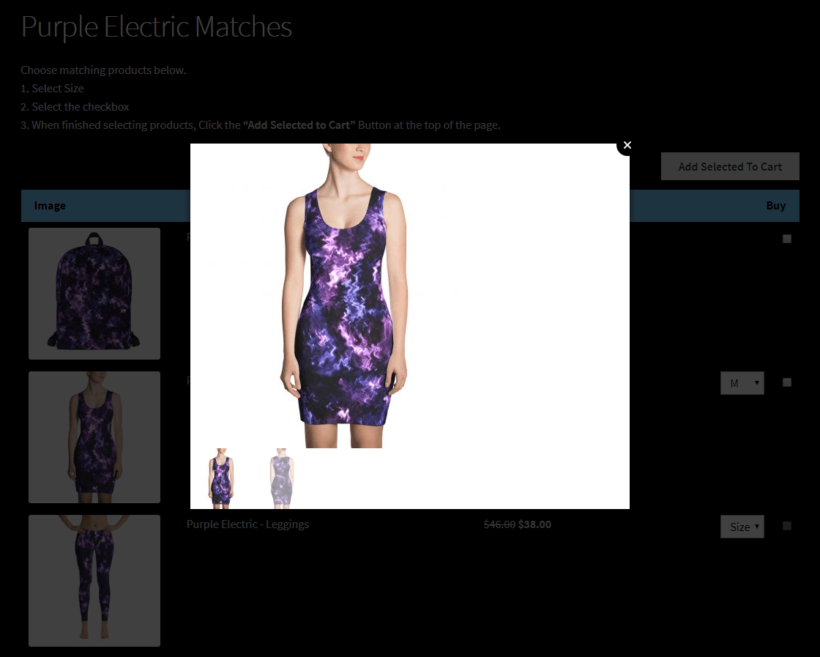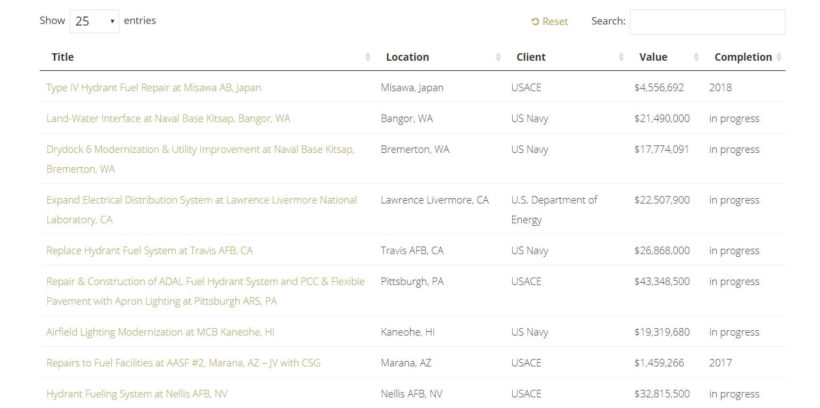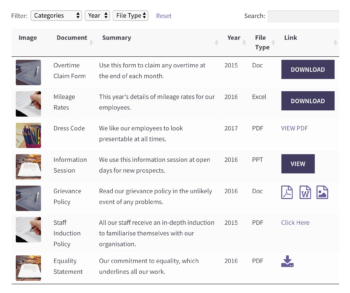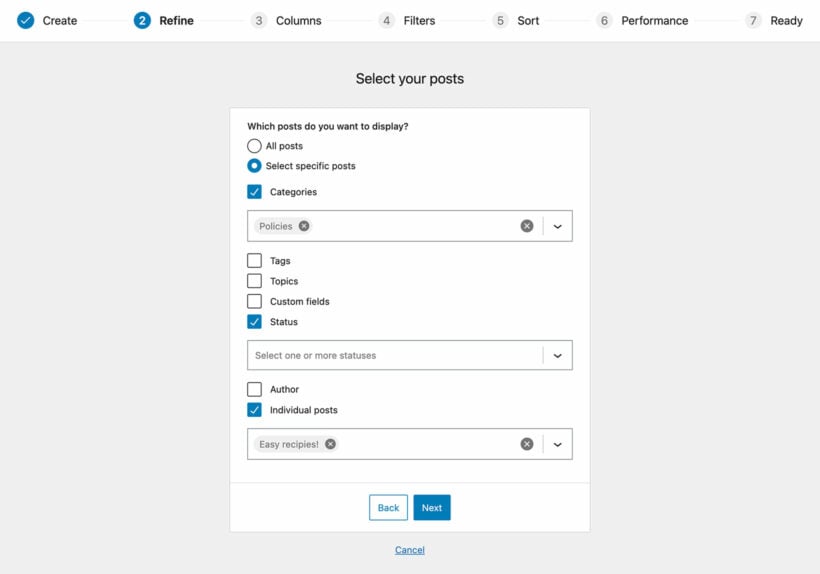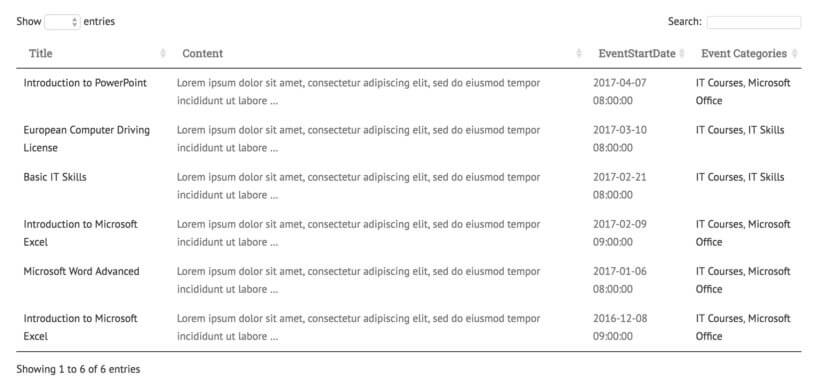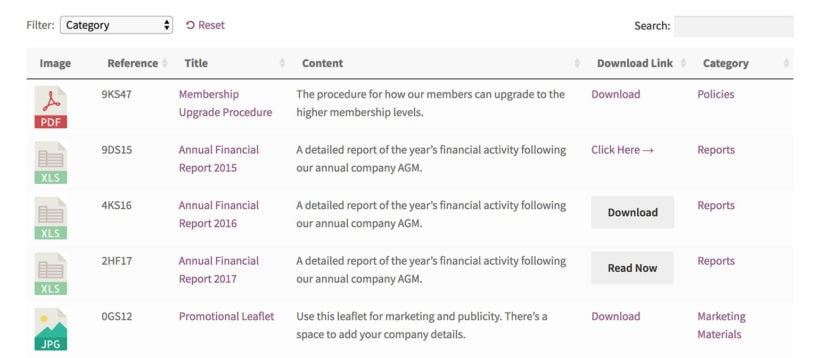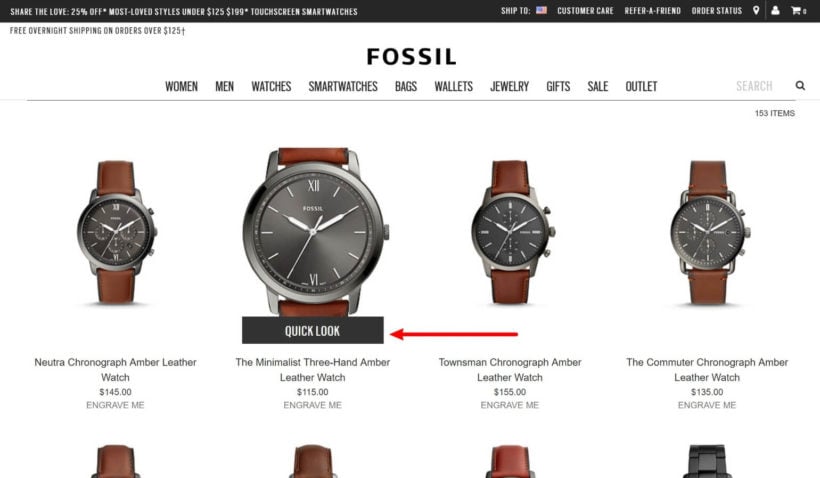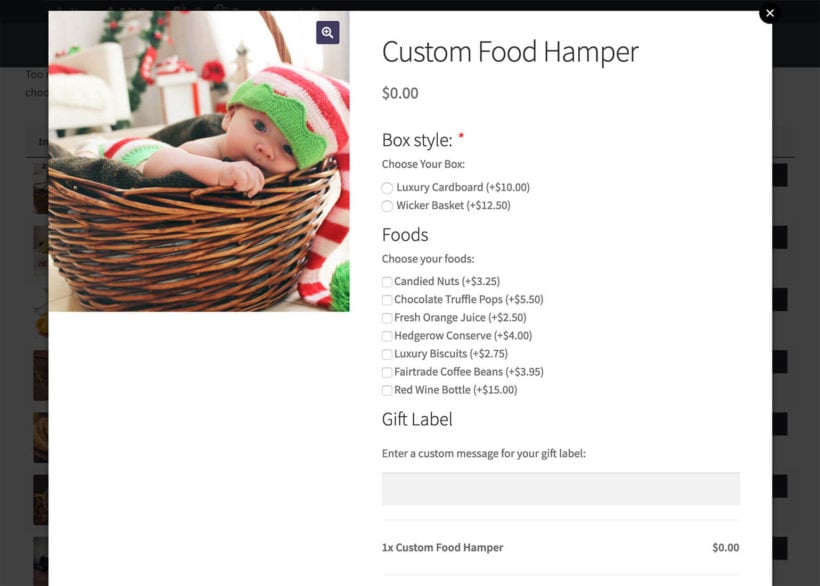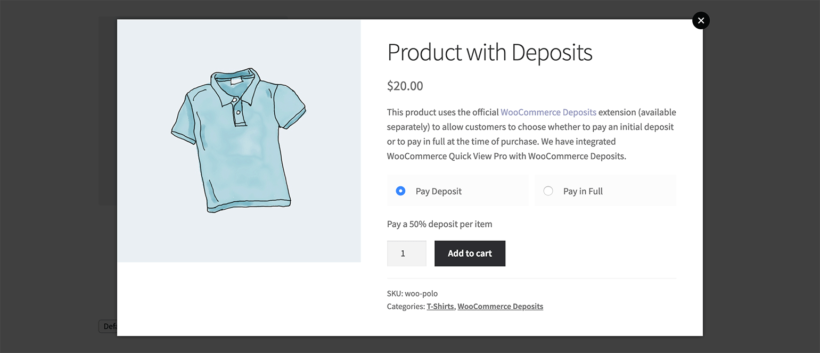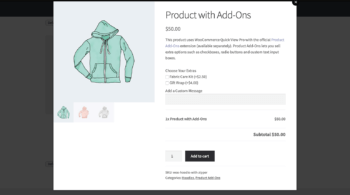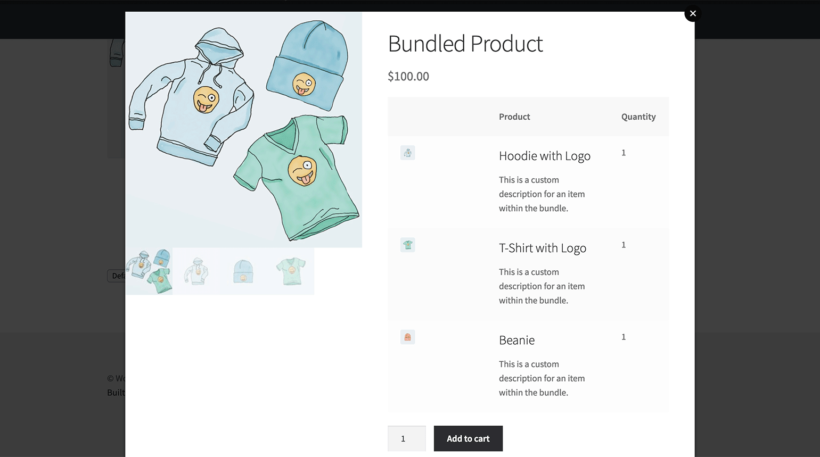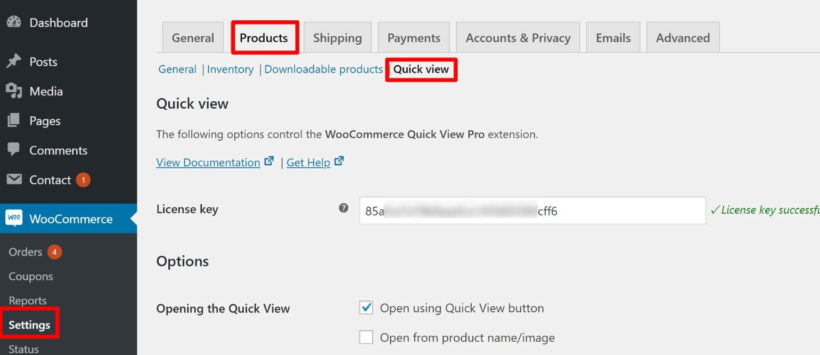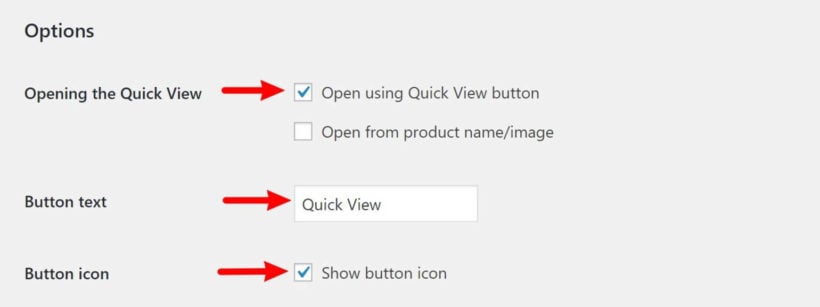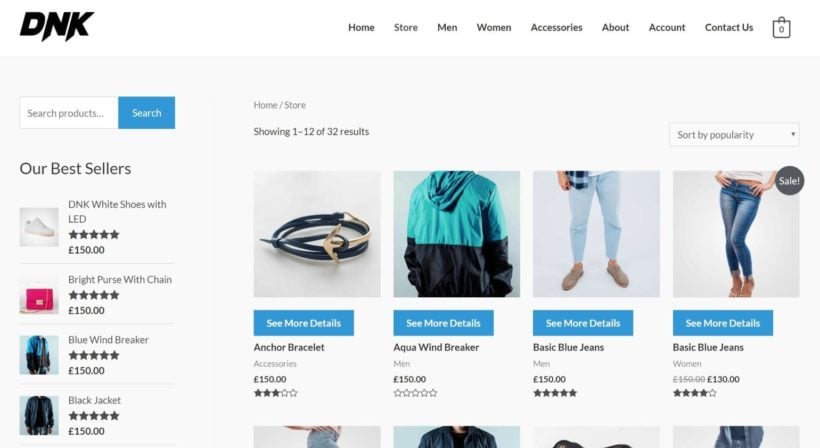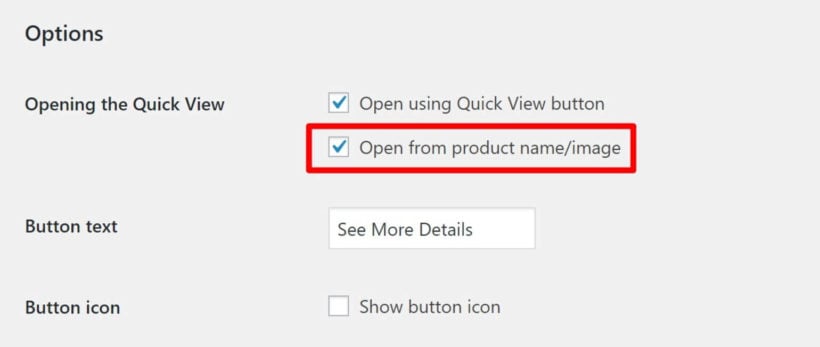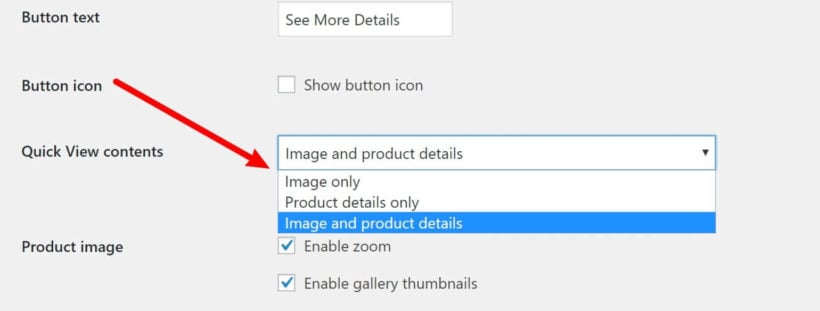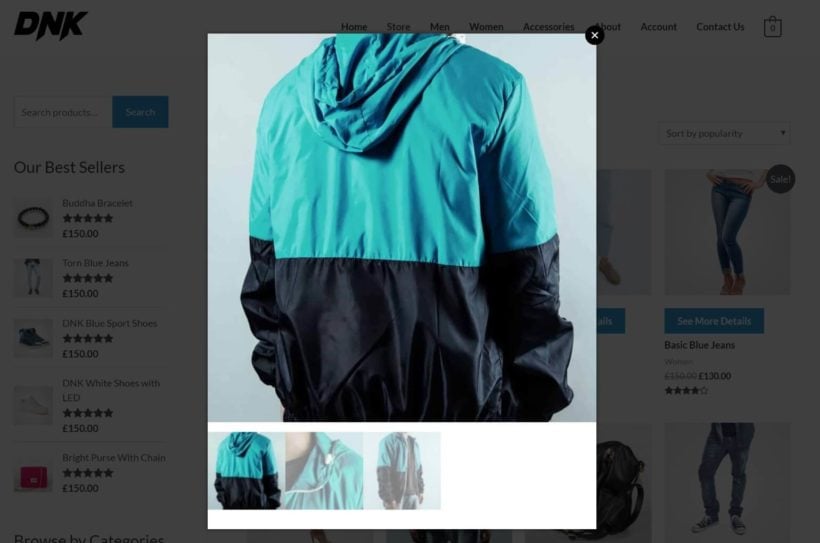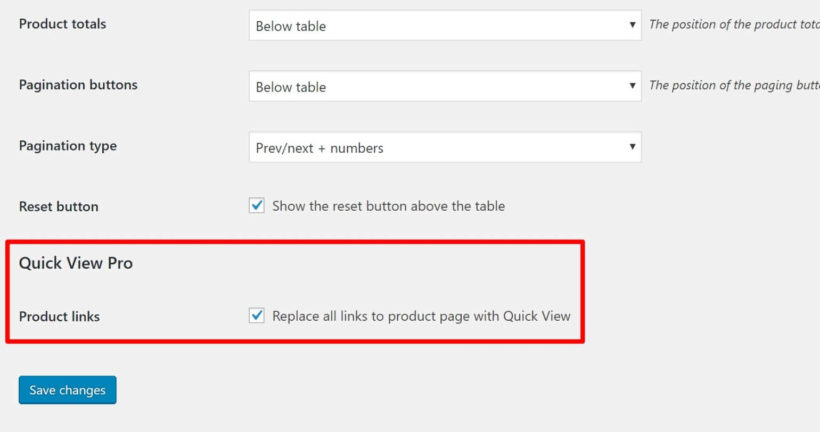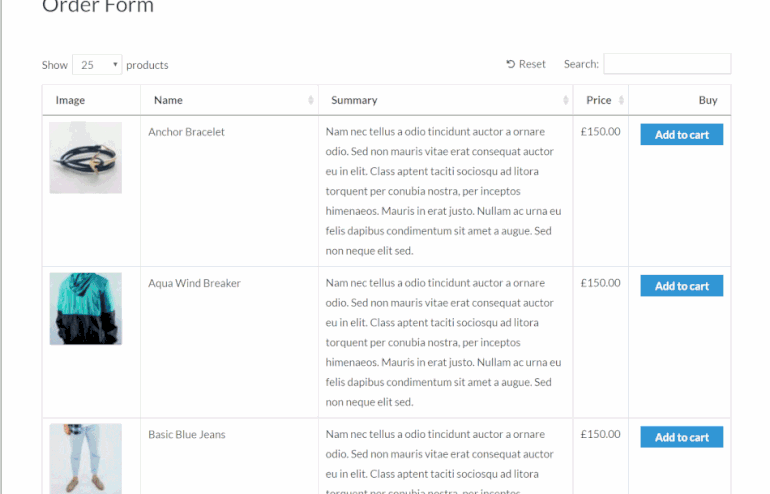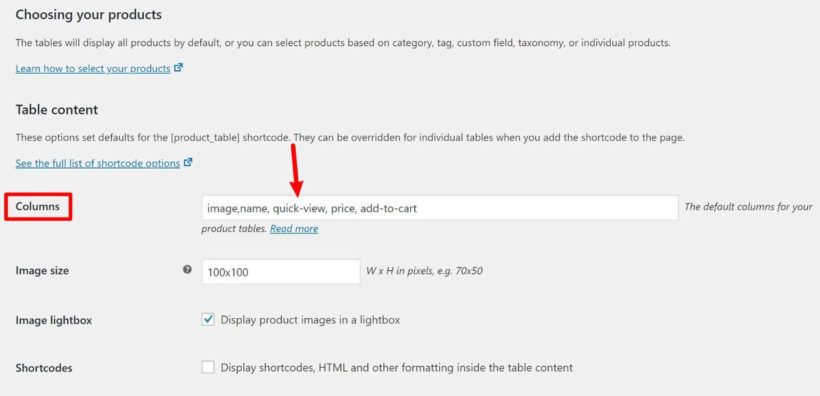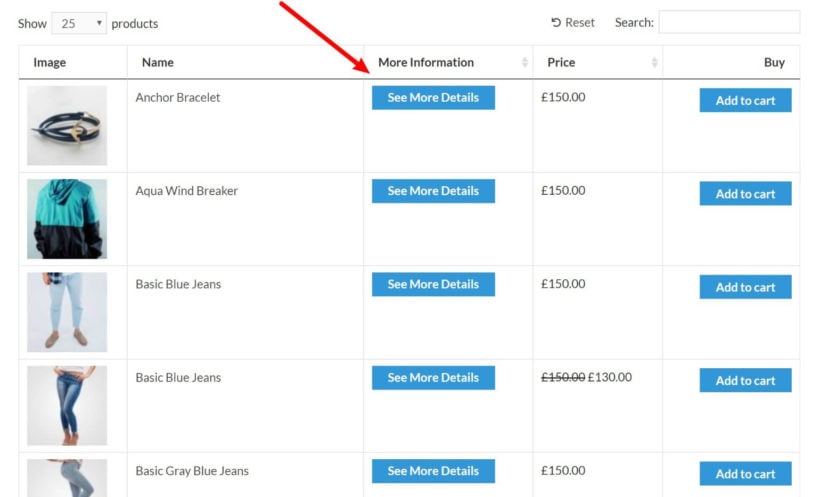
Many online shop owners need to be able to take and place WooCommerce manual orders for customers. This could either be phone orders, email, or chat. Typically, this involves creating an account for the customers, filling out their orders, and taking payment in person or over the phone.
The only problem is that WooCommerce manual orders aren’t supported out of the box. Shop owners need an easy way to be able to place customer orders efficiently.
In this article, we’ll introduce you to a WooCommerce manual orders plugin that you can use and configure to quickly place customers' orders. We’ll also walk you through a step-by-step tutorial to help you integrate this functionality into your own WooCommerce store. We'll do this by creating a simple, one-page order form that's searchable, sortable, and filterable.
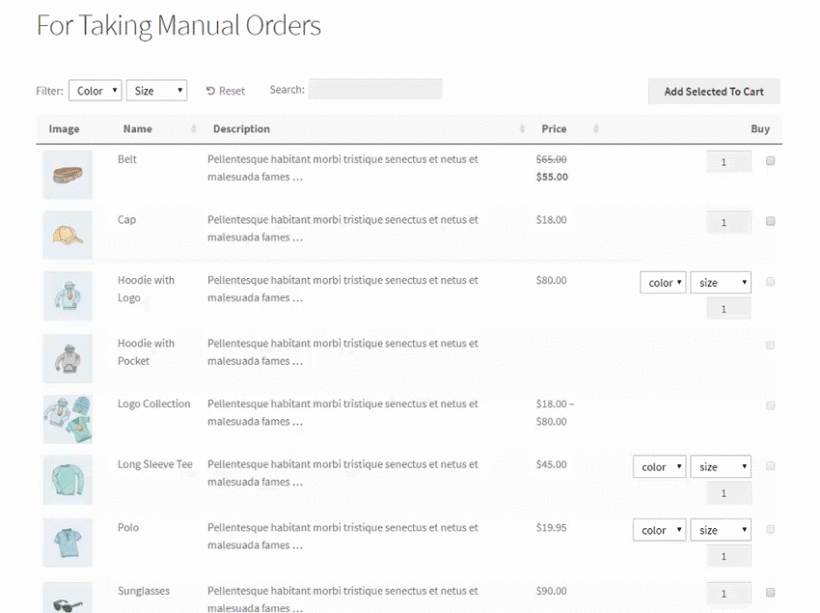
Why you might need to take WooCommerce manual orders
Many online businesses cater to customers that would prefer to place orders in person, over the phone, by email, or live chat. In other words, they provide their order details and payment information like billing address, shipping method, and shipping address to a salesperson.
Since the ecommerce plugin doesn’t support WooCommerce manual orders out of the box, shop owners resort to other measures:
- Accessing their online store from a private (or incognito) window or from the online store's backend to place the customer’s order.
- Logging in and out of their admin user account to place orders for customers.
- Placing the customers’ order only to find that they’re a new customers and, therefore, need a user account first.
Aside from the fact that this isn’t a user-friendly approach to placing orders, it’s also incredibly inefficient. Instead, shop owners need a way to be able to:
- Create a WooCommerce order form that’s hidden from regular customers so they’re able to place new orders without logging out of their admin user accounts.
- Make it easy for multiple salespeople to place customer orders through the hidden order form and choose from all of the available payment methods. It's a good idea to make all payment gateways available.
- Place WooCommerce phone orders on behalf of their customers – whether they’re existing customers or new customers.
With the right WooCommerce manual orders plugin and implementation, you’ll be able to do all of this and much more.
Taking manual orders in WooCommerce: 2 methods to consider
While ecommerce is the preferred method of shopping for many customers today, some may still prefer to place orders by phone or email or may face technical difficulties when trying to order online.
To accommodate these customers, it's important to have a system in place for taking manual orders. If you're using WooCommerce as your ecommerce platform, you have several options for taking manual orders, including using a dedicated WooCommerce manual order plugin or adding orders manually in the back end.
In this section, we'll explore these two methods in more detail, and discuss some best practices for taking manual orders in WooCommerce.
Method #1: Introducing the WooCommerce manual orders plugin
Taking WooCommerce orders from customers manually – either over the phone, email, or live chat – is incredibly important for some online businesses. One of the easiest ways to implement this sort of functionality into your own online store is by using a WooCommerce manual orders plugin such as WooCommerce Product Table Pro.
WooCommerce Product Table lets shop owners create a dynamic, front-end WooCommerce order form that’s hidden from public view. Salespeople will then be able to access the order notes (without having to log out of their own account) and place the customer’s existing order.
With WooCommerce Product Table, you’ll be able to create a searchable, sortable order form with filters that makes it easy to quickly find the product(s) customers would like to purchase. At the minimum, the WooCommerce manual order plugin lets you:
- Add products to the cart without navigating to single product pages.
- Select product variations directly from the order form or from a quick view lightbox.
Additionally, salespeople will also be able to place orders for customers with existing user accounts and new customers. You’ll also have the option to automatically create an account for new customers or offer a guest checkout option.
How to take WooCommerce phone orders manually using WooCommerce Product Table Pro
With WooCommerce Product Table, you’ll be able to create a hidden page where admins and salespeople can take WooCommerce phone orders or add orders from paper order forms, emails, or live chat.
Assuming you already have a WooCommerce store setup with some products added to it, here’s what you need to do to take WooCommerce phone orders from customers.
Step #1: Install and activate the WooCommerce Product Table plugin
To get started, get the WooCommerce Product Table plugin and install it to your WordPress website. Once that’s done, head over to WooCommerce → Settings → Products → Product tables to activate the license key.
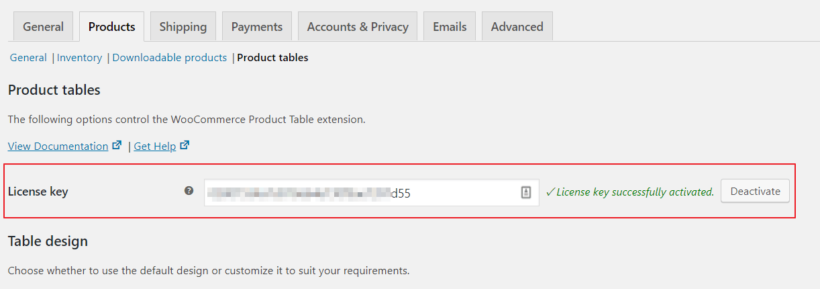
Click the Save changes button at the bottom of the screen to continue.
Step #2: Create a WooCommerce order page
Create a new page (by navigating to Pages → Add New) where you’ll add the WooCommerce manual orders form.
To do this, simply enter the shortcode [product_table].

Once you’re done, preview the page on the front end. It should look something like this:

The key benefit of using WooCommerce Product Table to create an order form is that it allows employees and salespeople to quick-find products, select variations, and place the customer’s order.
Pro tip for selecting products more quickly
If you sell a lot of inexpensive products or find that customers typically purchase multiple products from you at a time, you might consider replacing Add to Cart buttons in the table layout with add to cart checkboxes. Here’s how:
- Head over to the WooCommerce Product Table plugin’s settings screen (WooCommerce → Settings → Products → Product tables).
- Scroll down till you reach the Add to cart column section and set the Add to cart button option to either Checkbox only or Button and checkbox.
- Click the Save changes button to continue.
For example, if you go with Checkbox only, it should look something like this:

Step #3: Hide the WooCommerce order form from public view
Since we don’t want the WooCommerce manual orders form to be accessible to regular customers, we’ll use an SEO plugin (such as Yoast SEO) to noindex the order form page.
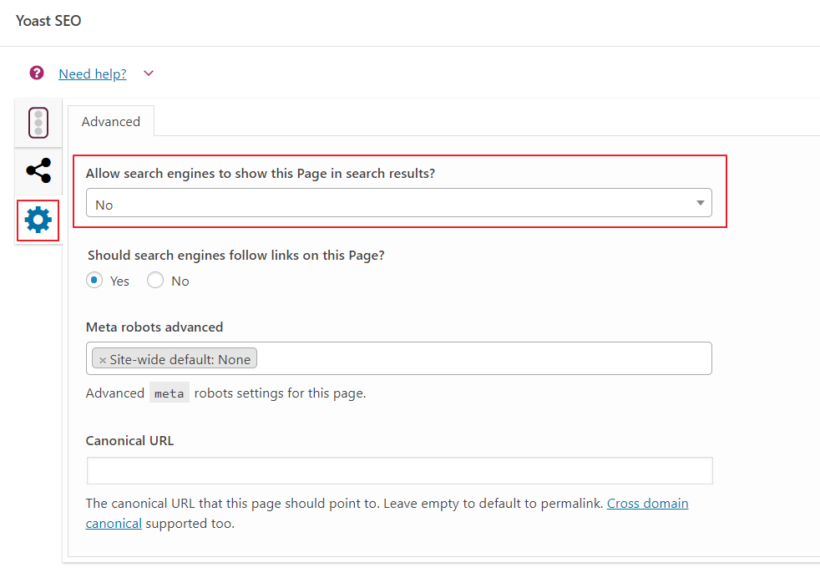
- Simply open up the page you created in Step #2, and scroll down till you reach the Yoast SEO widget.
- Click the cog icon to access the Advanced settings.
- Set the Allow search engines to show this Page in search results? option to No.
- Click the Publish button to proceed.
This way, the WooCommerce manual orders page won’t appear in search results. You can share a link to this page with salespeople and employees. However, you shouldn’t add a link to it to your online store’s navigation menu so that it remains hidden from public view.
Step #4: Take manual payments in WooCommerce
Next, you need a way to take WooCommerce manual payment from customers. It needs to work whether you're doing face-to-face sales, WooCommerce phone orders, or something else.
There are a few options here:
- Enter their payment details manuallyThis is best for WooCommerce phone orders. Just choose a normal payment gateway such as Stripe, and enter the customer's credit card details on the checkout page. This is just as if the customer was ordering directly on the website, but you're doing it on their behalf.
- Use WooCommerce In Person PaymentsWooCommerce has launched a service for the US and Canada where you order a card reader which takes credit card payments from customers.
- Use a PayPal card readerIn the last few years, PayPal has introduced card readers which provide an affordable way to take face-to-face credit card payments. These are called "PayPal Here" card readers. Use the free WooCommerce PayPal Here plugin to take website payments using a PayPal card reader.
Step #5: Taking orders from customers
Now that you’ve set up the online order form using WooCommerce Product Table, there are two main ways you can place orders on behalf of the customer.
For customers with an existing account:
Install the WooCommerce Login and Shop as Customer plugin to your WordPress website. You can use it to switch to the customer’s user account before placing their order.
For new customers:
When taking orders for new customers, you can either offer them a guest checkout option or place an order as a new customer. For the latter, you’ll need to ensure you’re logged out. You’ll be able to create an account for the customer automatically since entering their email address is part of the order placement process.
Method #2: Adding new manual orders in the back end
We'll show you how to add manual orders in the back end of your WooCommerce store and provide some tips for establishing a clear manual ordering process. By following these steps and guidelines, you can ensure that your customers can place manual orders easily and that your staff can process them efficiently and accurately.
Steps in creating manual orders
Here are the steps to add new manual orders in the back end of your WooCommerce store:
- Log in to your WordPress dashboard and navigate to the "Orders" section.
- Click the "Add Order" button. This will take you to the "Add New Order" page.
- Enter the customer's details in the appropriate custom fields, such as their name, email address, and phone number. You can also select whether the order is for a registered customer or a guest.
- Add the items the customer wishes to order by clicking the "Add item(s)" button. You can search for products by name or SKU and select the quantity and any relevant variations.
- Set the pricing details, including the product price, tax, and shipping costs. You can also add any discounts or coupons if applicable.
- Select the payment method the customer will use to pay for their order. If they are paying by credit card, you can enter their details manually or use a payment gateway integration.
- Set the shipping details, such as the shipping method, address, and any notes or instructions for the delivery.
- Review the order details and click "Save Order" to complete the process.
While adding manual orders in the back end of your WooCommerce store can be a useful option, it's worth noting that it may be more time-consuming than using a dedicated plugin, particularly if you have a high volume of manual orders.
If you're using a plugin such as WooCommerce Wholesale Pro, you can take advantage of features such as the automatic calculation of wholesale prices based on the customer's role. Regardless of whether you use a plugin or not, it's essential to establish clear processes for manually creating orders to ensure that they are processed efficiently and accurately.
Tips for streamlining manual orders in your online store
Here are some tips for establishing a solid manual ordering process:
- Set up a dedicated phone line or email address for manual orders to ensure that they are tracked separately from online orders.
- Train your staff on how to WooCommerce create order for customers manually and provide them with clear guidelines and procedures to follow.
- Use a centralized system to manage and track manual orders alongside your regular online orders. This could include using a spreadsheet or order management software.
- Ensure that you have a clear process for handling WooCommerce manual payment and shipping details, such as verifying credit card information and selecting the appropriate shipping method.
Bonus: For orders with lots of variations
If you’re selling products with lots of variations, they’ll likely take up a significant amount of space on the one-page order form. Instead, you can use the WooCommerce Product Table plugin with WooCommerce Quick View Pro to add quick view lightboxes.
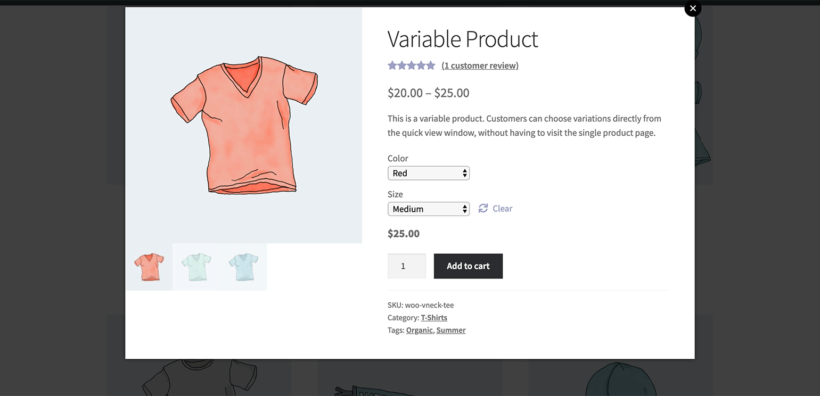
By doing so, salespeople will be able to choose product variations. As well as add them to cart directly from the quick view lightbox.
The WooCommerce manual orders process
Once that’s all done, your WooCommerce phone orders process will look something like this:
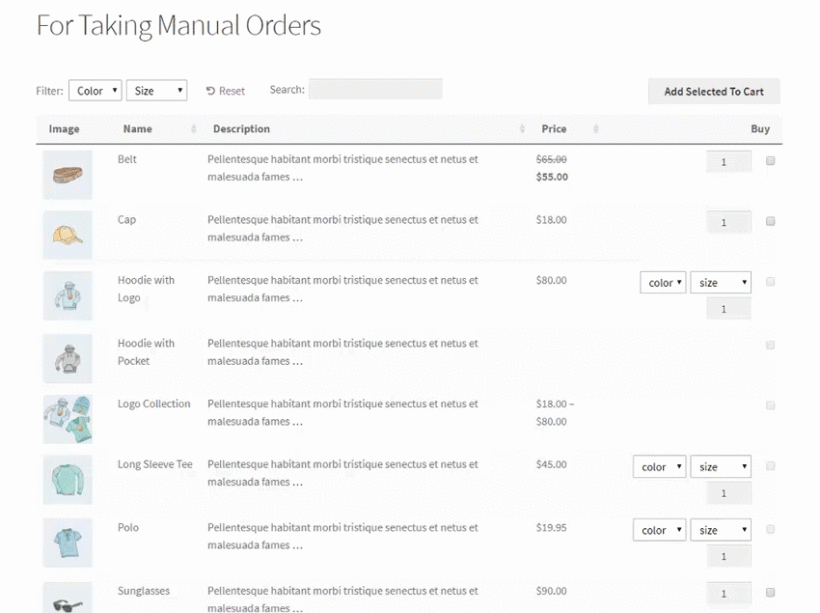
- Whenever a salesperson receives a phone call (or paper order form), they’ll log in as the relevant customer, add a new user account on their behalf or select the guest checkout option.
- Next, they’ll place the customer’s order using the order form, select products and variations, and add them to the cart.
- Finally, they can head over to the main WooCommerce checkout to complete the order. From there they can choose from the available pending payment gateways to complete the transaction (or use a card reader for in-person payments).
- Customers will receive the usual email order confirmation email letting them know that their order has been placed along with other important details (such as the order status link).
Conclusion
Enabling customers to place WooCommerce phone orders can be a beneficial strategy for online store owners who wish to increase their sales. By using the WooCommerce create order for customer feature, store owners can improve the overall customer experience.
With a WooCommerce manual orders plugin – like WooCommerce Product Table – you can make it easy for customers to place orders over the phone while making the order placement process seamless for salespeople.
Do you have any questions about how to take WooCommerce manual orders – over the phone, by email, or via live chat? Let us know in the comments section below! And see this tutorial if you want to create a WooCommerce one page order form and checkout for your customers to use.
